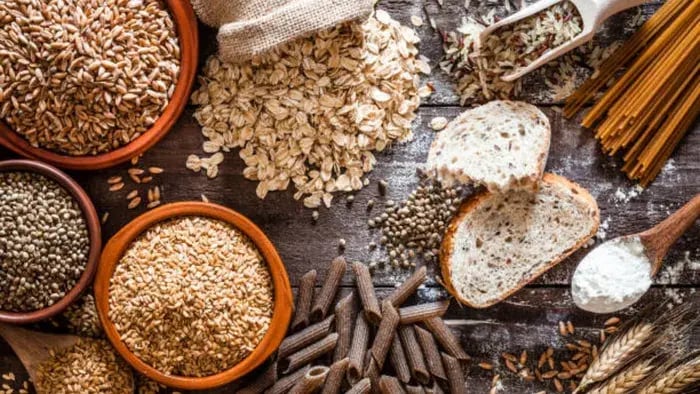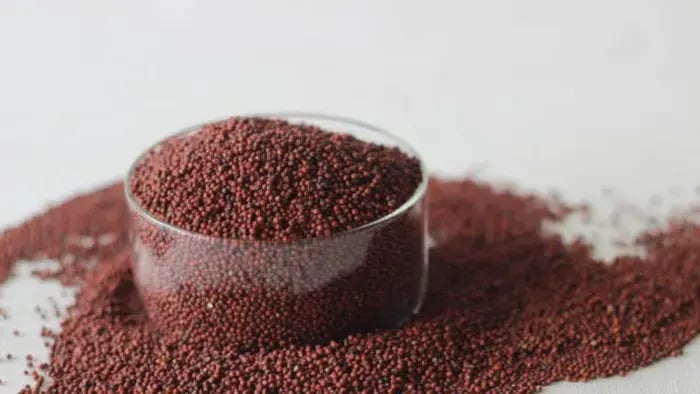- Whole Wheat (Atta)
- Sunflower Seeds
- Brown Rice
- Moong Dal (Green Gram)
- Garlic
- Paneer (Homemade or Fresh)
- Ragi (Finger Millet)
Introduction

Selenium might not top your grocery list, but this tiny nutrient plays a big role in keeping you healthy. It quietly supports your immune system, helps your thyroid work smoothly, and defends your cells against damage. Even though your body only needs a small amount, falling short is surprisingly common, especially if you follow a vegetarian diet or mostly eat local, seasonal foods. That’s what makes selenium so interesting: it’s easy to ignore, but even easier to miss.
For Indian households, the challenge is variety. A typical desi plate, though rich in grains, vegetables and spices, may not always deliver enough selenium unless you know where to look. The good news is you don’t need imported nuts or fancy supplements. Some common Indian foods, when rotated smartly through your meals, can give you just the right amount of this essential mineral.
It is about choosing ingredients that quietly support long-term well-being. Let’s explore how to make selenium a part of your desi diet without changing your kitchen too much.
7 Simple Ways to Include Selenium in Everyday Indian Meals
Selenium might not be the star of every nutrition conversation, but it quietly plays an essential role in how your body works. It helps regulate your thyroid, supports immunity, and acts as an antioxidant, protecting your cells from damage. But because your body only needs a small amount, it’s easy to either forget about it or unknowingly fall short.
Here are 7 accessible Indian foods and ingredients that naturally help you meet your selenium requirements.
Whole Wheat (Atta)

According to a study published in, Front Nutr. 2023, whole wheat, especially when freshly milled, contains selenium thanks to the mineral-rich soil it’s grown in. If your family eats chapatis or parathas daily, you’re already getting a decent dose of selenium. Try not to over-refine or over-sift your flour, as the outer layers (where most selenium is) may get removed.
Sunflower Seeds
These crunchy seeds are becoming a part of Indian snack culture, and for good reason. According to a study published in, Plants (Basel). 2021, just a tablespoon can provide a boost of selenium, along with vitamin E and healthy fats. Sprinkle them on poha, mix into rotis or homemade granola, or simply roast and eat as a trail snack. Kids also enjoy them when added to laddoos or nut mixes.
Brown Rice
As per a study published in The National Institutes of Health, brown rice retains its outer layers, which are where most of the nutrients, including selenium, reside. While it takes slightly longer to cook, the payoff is worth it. Use it for khichdi, pulao, or even as a base for leftover sabzis. Start by mixing half brown and half white rice if your family is new to it.
Moong Dal (Green Gram)
Among all dals, moong dal is known for being easily digestible and high in protein. Research conducted by, J Food Sci Technol. 2016, shows that it contains a small but useful amount of selenium. Serve it as plain dal, dosa batter, or sprout it for a refreshing salad. When combined with whole grains, moong helps complete the selenium picture on your plate.
Garlic
Garlic has long been valued in Indian kitchens, not just for its taste but for its healing properties. A study published in Front Nutr. 2023, suggests that it also contains selenium in small amounts. Adding chopped garlic to dals, tadkas, rasam, or even homemade pickles is an easy way to bring its benefits to your plate. It supports both taste and health, without much effort.
Paneer (Homemade or Fresh)
If your family includes paneer in meals once or twice a week, you’re also helping meet selenium needs. As per a research published in J Food Sci Technol. 2011, shows dairy products are a dependable source, and paneer, especially when made at home using curdled milk, retains more nutrients. Serve it grilled, in curries, or stuffed into rotis. Pair with vegetables and whole grains for added impact.
Ragi (Finger Millet)
Research conducted by, J Food Sci Technol. 2011, shows that ragi is rich in calcium, fiber, and yes, selenium. Especially useful for kids and older adults, it can be used in porridge, dosa, laddoos, or rotis. Since it’s gluten-free, it’s also a good option for families exploring variety or dealing with sensitivities. Try introducing it slowly if it's not yet a regular in your kitchen.
Conclusion

To make the most of selenium-rich meals, try pairing your ingredients thoughtfully—like cooking lentils with a dash of ghee for better absorption or soaking millets overnight to improve mineral availability. Even simple steps like sprouting grains or roasting seeds can unlock more nutrition. Small changes in how you prepare food can make a big difference in how well your body benefits from it.
Her love for storytelling began with reading her grandfather’s speeches, where Tarishi saw the power of words in creating lasting memories. Combining her passions for food and writing, she has turned her life into a fulfilling path of sharing stories that celebrate flavours and how food brings communities together.
The views expressed are that of the expert alone.
The information provided in this content is for informational purposes only and should not be considered a substitute for professional medical advice, diagnosis, or treatment. Always seek the advice of your physician or another qualified healthcare provider before making any significant changes to your diet, exercise, or medication routines.
References
https://pmc.ncbi.nlm.nih.gov/articles/PMC4033754/
https://pmc.ncbi.nlm.nih.gov/articles/PMC4008736/
https://pmc.ncbi.nlm.nih.gov/articles/PMC9978857/
https://pmc.ncbi.nlm.nih.gov/articles/PMC5336450/
https://ods.od.nih.gov/factsheets/Selenium-HealthProfessional/
















